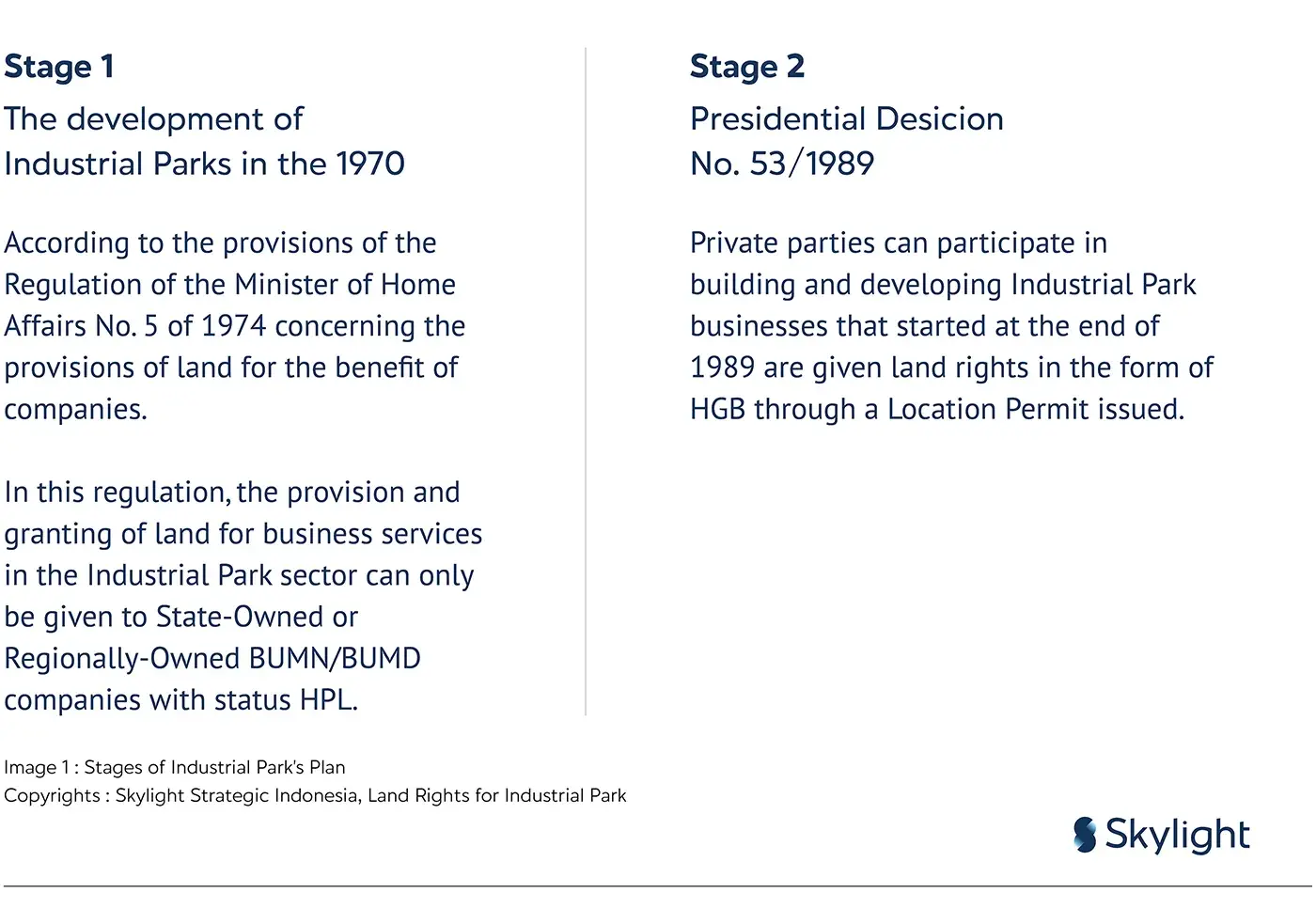
Fahmi Shahab – Industrial Park
Introduction
Have you ever wondered how the evolution of Industrial Parks in Indonesia has shaped its economy over the past five decades? Since the government initiated the development of Industrial Parks in the 1970s, through State-Owned Enterprises (SOEs or BUMN) and Regional-Owned Enterprise (ROE or BUMD), followed by private sector involvement in the 1990s, Indonesia has now seen the emergence of 117 Industrial Parks across 24 provinces.
These Industrial Parks play a crucial role in driving national economic development, particularly in boosting the manufacturing sector, which is a significant contributor to GDP. Beyond economic benefits, Industrial Parks help streamline spatial planning and improve the overall organization of industrial development.
Yet, a key factor in the growth of these Industrial Parks lies in Land and Spatial Planning—a foundational aspect that determines everything from land rights and legality to space utilization. These challenges often become complex, requiring coordinated efforts from multiple stakeholders to ensure legal certainty and smooth investment flows. In Indonesia, land issues continue to be governed by Law No. 5 of 1960 concerning Basic Regulations on Agrarian Principles (UUPA), which outlines land rights for both community welfare and business development. How can stakeholders better navigate these challenges to foster sustainable growth in industrial development? Lets dive in.
Land Issue in Industrial Park
Related to the planning of Industrial Parks, land issues can be seen in two stages:

The land allocated for Industrial Park activities is based on the provisions that have been determined by the Government and Regional Governments based on the Regional Spatial Plan (RTRW) in a province, district / city. In terms of utilization for the development of Industrial Parks, the role of the Central Government is to determine an area globally through the National Industrial Development Master Plan (RIPIN) where the layout of an Industrial Park is based on the Industrial Designated Area (KPI) in a region. The Ministry of Industry has developed a strategy for the development of industrial development areas through the Industrial Development Area (WPI) which is then divided into the Industrial Growth Center Area (WPPI) and then spatially determined to be an Industrial Designated Area (KPI) in each district / city to develop the Industrial Park.
Government vs. Private Sector: A Closer Look at Land Rights Title
Land rights obtained for Industrial Parks, can be categorized as follows:
- Industrial Parks whose shares are owned by the Government / Regional Government in the form of SOEs / ROEs, generally get land rights in the form of Right to Manage (HPL). Thus, the Industrial Park Company as the holder of HPL represents the State/Regional assets. From the HPL controlled by the Industrial Park company, Right to Build (HGB) can be granted to the companies within the area (known as tenants). This is formalized through an Industrial Land Use Agreement (SPPTI), which is a contractual agreement between the Industrial Park company and the tenants, outlining the terms of land use. It’s important to note that industrial companies in these Industrial Parks are not the owners of the land. Instead, they are beneficiaries with land use rights as outlined in the SPPTI, meaning the land is not considered a fixed asset of the company.
- Industrial Parks managed by private companies are granted land rights in the form of Right to Build (HGB). This means the company that owns the Industrial Park has full ownership of the land. From this main HGB, the company can divide the land and grant HGB rights to industrial tenants within the Industrial Park. These tenants acquire land rights through a Sale and Purchase Agreement (AJB), allowing them to own fixed assets for a set period.
- The land rights are granted for 30 years, with an option to extend for 20 more years, and they can be renewed once for another 30 years—giving a total possible duration of 80 years. This structure offers both long-term security and flexibility for businesses operating within the Industrial Park. Some Industrial Parks with SOE status or subsidiaries of SOEs/ROEs companies that do not use the State Budget can obtain HGB land status as well as Private Industrial Parks. For example:
- PT Kawasan Industri Wijayakusuma in Semarang, Central Java;
- Bontang Industrial Park, a subsidiary of PT (Persero) Pupuk Kaltim; and
- Some locations developed by PT Krakatau Sarana Industri, a subsidiary of PT (Persero) Krakatau Steel.
Exploring Different Land Acquisition Models
To get a clearer picture of the status of land obtained by Industrial Park Companies and Industrial Companies, we have made a comparison table between:
- Land Acquisition for SOEs / ROE Industrial Parks;
- Land Acquisition for Private Sector Industrial Parks;
- Land Acquisition for Industrial Parks located in the Batam Free Trade Zone and Free Port.

Source
Skylight Analytics Hub
Disclaimer
The content on this platform (“Platform”) is proprietary to Skylight, protected under copyright and intellectual property laws, and cannot be reproduced or used without written authorization. The insights shared are for informational purposes only, do not constitute professional advice, and may not reflect the latest industry developments. Skylight and its contributors disclaim all liability for actions taken based on the content and do not guarantee specific outcomes from past insights or case studies. Use of the Platform does not establish any contractual or advisory relationship with Skylight. By accessing this Platform, you agree to these terms. © 2025 Skylight Strategic Indonesia. All rights reserved.
